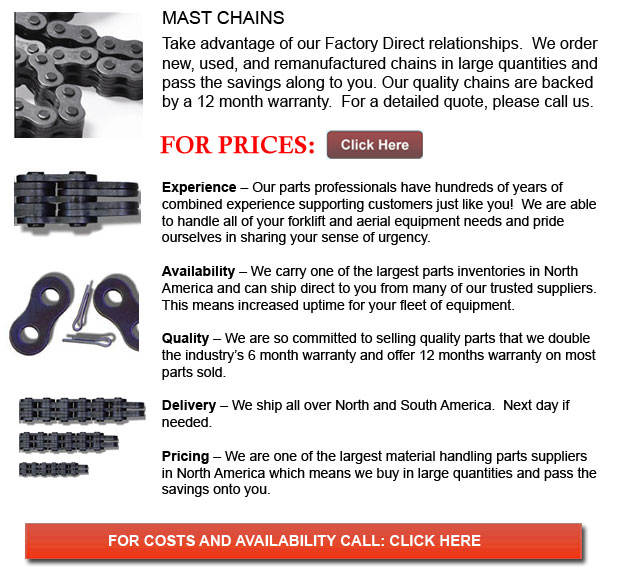
Mast Chains - Leaf Chains have several applications and are regulated by ANSI. They are used for tension linkage, forklift masts and for low-speed pulling, and as balancers between counterweight and head in some machine gadgets. Leaf chains are at times likewise referred to as Balance Chains.
Construction and Features
Leaf chains are steel chains with a simple pin construction and link plate. The chain number refers to the pitch and the lacing of the links. The chains have certain features such as high tensile strength for each section area, that enables the design of smaller machines. There are B- and A+ kind chains in this particular series and both the BL6 and AL6 Series include the same pitch as RS60. Finally, these chains cannot be powered with sprockets.
Handling and Selection
Comparably, in roller chains, all of the link plates maintain higher fatigue resistance due to the compressive stress of press fits, while in leaf chains, just two outer plates are press fit. The tensile strength of leaf chains is high and the most acceptable tension is low. Whenever handling leaf chains it is essential to check with the manufacturer's handbook in order to ensure the safety factor is outlined and use safety measures all the time. It is a great idea to exercise utmost caution and use extra safety guards in applications wherein the consequences of chain failure are severe.
Higher tensile strength is a direct correlation to the use of a lot more plates. For the reason that the use of much more plates does not improve the maximum allowable tension directly, the number of plates can be restricted. The chains require regular lubrication because the pins link directly on the plates, producing a very high bearing pressure. Making use of a SAE 30 or 40 machine oil is often suggested for the majority of applications. If the chain is cycled over one thousand times every day or if the chain speed is more than 30m per minute, it would wear really quick, even with constant lubrication. Therefore, in either of these conditions the use of RS Roller Chains will be more suitable.
The AL-type of chains must only be utilized under certain situations like for example if wear is really not a big problem, if there are no shock loads, the number of cycles does not go over one hundred daily. The BL-type would be better suited under various situations.
If a chain with a lower safety factor is selected then the stress load in parts would become higher. If chains are utilized with corrosive elements, then they could become fatigued and break somewhat easily. Performing frequent maintenance is important when operating under these kinds of conditions.
The type of end link of the chain, whether it is an inner link or outer link, determines the shape of the clevis. Clevis connectors or otherwise called Clevis pins are constructed by manufacturers but often, the user provides the clevis. An improperly constructed clevis can lessen the working life of the chain. The strands must be finished to length by the manufacturer. Check the ANSI standard or get in touch with the maker.
![]() Click to Download the pdf
Click to Download the pdf
Forklift Parts
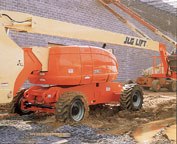
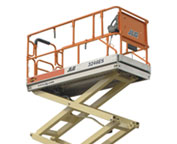
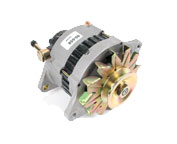
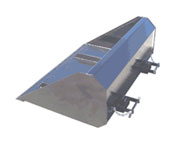
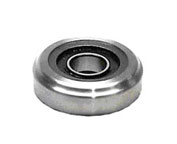
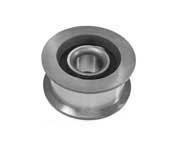
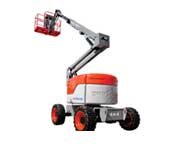
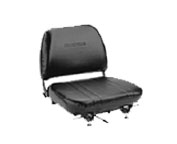
Lift Parts Express
TOLL FREE: 1-888-695-7994
Brandon, Manitoba
forkliftpartsbrandon.ca
Email Us
About Us


